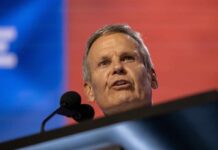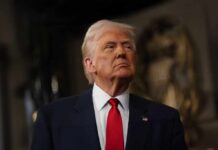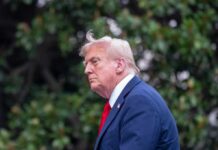
This week’s dramatic drop in U.S. jobless claims is raising eyebrows and sparking heated debates about the true state of our economy.
At a Glance
- Jobless claims fell by 7,000 to 221,000, the lowest level in three months.
- Federal Reserve interest rates remain high, aiming to curb inflation.
- Unemployment rates are stable, but sector-specific layoffs are rising.
- Economists are divided on the implications of these trends.
Jobless Claims Hit New Low
The U.S. labor market delivered a surprise this week with the announcement that initial jobless claims fell to their lowest level in three months, a drop of 7,000 to 221,000. This marks the fifth consecutive weekly decline, underscoring the labor market’s resilience even as the country grapples with high interest rates and economic uncertainty. The four-week moving average, which smooths out volatility, also saw a drop, landing at 229,500 from 235,750. Despite these promising figures, the backdrop of high interest rates set by the Federal Reserve raises questions about the sustainability of this trend.
#NewsFatafat | U.S. jobless claims fell by 7,000 to 221,000 last week. The 4-week average sits at 229,500. Continuing claims hold steady at 1.96 million, hinting at a cooling labor market as many still struggle to find new jobs#USJobs #Unemployment #LaborMarket #JoblessClaims pic.twitter.com/gctzpVe3PZ
— ET NOW (@ETNOWlive) July 18, 2025
While the drop in jobless claims might seem like a positive indicator, it’s crucial to examine the broader economic context. The Department of Labor’s report highlights a steady 1.3% insured unemployment rate for the week ending July 5, alongside a significant rise in jobless claims filed by former federal workers. This 85% year-over-year surge indicates underlying issues within specific sectors, particularly the federal workforce. As we navigate this economic landscape, it’s essential to ask: Are we witnessing the calm before a storm, or is this the beginning of a sustained economic recovery?
Watch a report: Jobless claims fall to lowest level in three months
Economic Pressure and Interest Rates
The Federal Reserve’s decision to maintain elevated interest rates is a calculated move to control inflation. However, this strategy comes with its own set of challenges. High interest rates typically dampen economic growth by making borrowing more expensive, which can slow down hiring and investment. Yet, the labor market has shown unexpected strength.
The challenge for policymakers is to balance these competing pressures without stifling the very growth they aim to protect. The current administration faces scrutiny as it navigates these economic waters, with critics arguing that policy missteps could lead to further instability.
Current developments suggest a labor market that remains robust, but with potential cracks beneath the surface. The recent news release from the Department of Labor emphasizes the continued strength of the labor market, yet economists warn of potential slowdowns in hiring. Rising insured unemployment and sector-specific layoffs, particularly within the federal government, could foreshadow broader economic challenges. As the administration touts positive labor data, the reality of job insecurity in certain sectors remains a contentious issue.
Sector-Specific Challenges
While the overall labor market appears strong, a closer look reveals sector-specific challenges that could unsettle the broader economic landscape. The federal government has seen a notable increase in jobless claims, a trend that reflects potential restructuring or budgetary constraints. Conversely, sectors like health care and state government continue to add jobs, highlighting a divergence in employment trends. This disparity underscores the complexity of the current economic situation and raises questions about the priorities and effectiveness of federal policies.
Economists remain divided on the implications of these trends. Some view the decline in jobless claims as a sign of resilience, while others caution that rising insured unemployment could indicate underlying vulnerabilities. The administration must carefully navigate these dynamics, balancing the need for economic growth with the realities of sector-specific challenges. As the debate continues, one thing is clear: the path forward is fraught with uncertainty, and the stakes are high for policymakers, workers, and the economy as a whole.

























